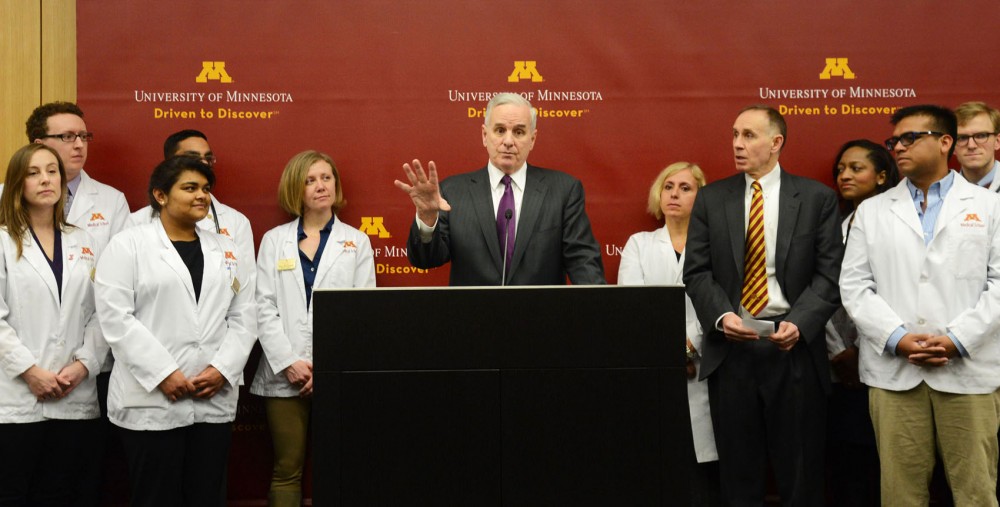Gov. Mark Dayton proposed an extra $30 million in state funding for the University of Minnesota’s Medical School on Wednesday, with the hopes the boost will improve research and alleviate doctor shortages in the coming years.
Dayton’s two-year plan is a part of his latest budget proposal that will be presented to the state Legislature next week. It would provide the school with $5 million next year, $25 million in 2017, and if the extra dollars prove to generate success, the governor plans to request another $50 million for the next biennium.
Dayton’s proposal is based on recommendations released on Tuesday from the Blue Ribbon Committee, a task force he created in August to improve the medical school’s reputation.
“The Medical School should be a boon to the state and the world,” Dayton said at a press conference on Wednesday.
In the 1970s, the school was in the top 15 of most highly-funded medical schools by the National Institutes of Health, according to the committee’s report.
But its ranking has since fallen.
Today, the school is 30th in the country.
The drop in the school’s ranking is due in part to a reduction in the number of tenure and tenure-track faculty, according to the report.
The governor’s proposal would fund 50 new research faculty members over the next eight years as a part of an attempt to attract NIH funding.
“The medical school in particular requires high-level researchers and faculty, and having a pool of money to recruit and retain folks for the kind of work they do is spot on,” Board of Regents chair Richard Beeson said.
Part of Dayton’s proposal is also dedicated to alleviating the state’s looming doctor shortage.
The state will lack about 850 doctors over the next decade, according to a 2014 study by the Minnesota Hospital Association.
The Medical School trains about 70 percent of medical professionals in Minnesota.
Some of the money included in Dayton’s proposal would also go to the University’s Rural Physicians Associates Program in an attempt to mitigate the shortage.
About half of RPAP students practice in rural areas after graduation, said Mark Rosenberg, Vice Dean for Medical Education.
RPAP is one of the University’s only methods for attracting physicians to rural areas, he said.
Dayton’s proposal also includes funding for groups of researchers that focus on specific health problems — like diabetes, called “medical discovery teams.”
Vice president of health science and dean of the Medical School Brooks Jackson was part of the Blue Ribbon Committee. He said he focused on funding the groups and helping train new medical professionals.
“It will allow us to become a world-class medical school,” he said.







